El Salvador – Not What I Was Expecting
This is my first post on El Salvador, the fourth country on Victor Romagnoli’s guided tour of all the Central American countries for Canadian travel company Adventures Abroad. I am writing this from home in the midst of the Covid-19 pandemic and really have no idea how or when things will return to a semblance of normalcy. In the meantime travellers who have not been stranded abroad have plenty of time on their hands as they practice social distancing and are for the most part prisoners in their homes and apartments. I considered just forgetting about writing up the rest of this amazing trip, but that would be defeatist and non-productive. The world is not going to end and eventually people will start traveling again and maybe in some small way my posts will contribute to that. Even if most people aren’t interested in going to El Salvador it helps to have some insight from someone who has actually been there.
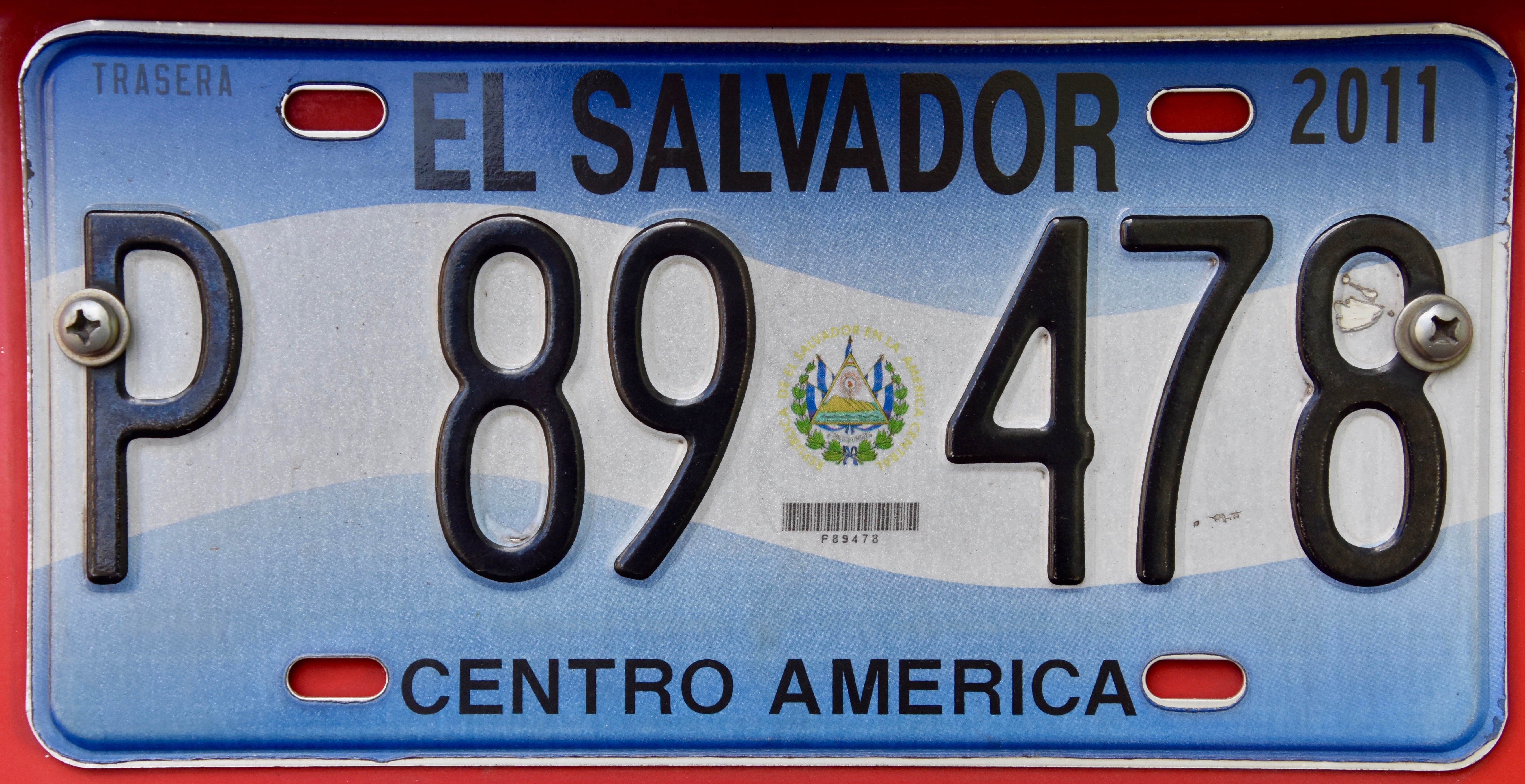
Let’s face it – El Salvador has a terrible reputation. Of all the Central American countries it probably has had the longest periods of repressive regimes and domination of all aspects of political and economic life by an oligarchy of fourteen families that continues to this day, although the fourteen has now been winnowed down to eight pre-eminent groups. But that’s not what’s behind El Salvador’s reputation today. It’s something that started in United States and was actually exported to El Salvador from the streets of east L.A. I’m referring of course to the notorious El Salvadorean street gangs MS-13 and MS-18 which President Trump has vilified in his anti-immigrant rants. He has also blamed Obama for their rise in the United States, but as this BBC story reveals, that is complete bullshit. The gangs first arose in Los Angeles in the 1980’s to protect El Salvadorean immigrants who had fled the long standing civil war in their home country. Like many gangs that start with a ’cause’ like the IRA, they quickly evolved into criminal organizations. The period when the gangs actually thrived the most was during the Bush-Cheney years.
Regardless of who is responsible for the rise of these criminal organizations there are certain undeniable facts. They are among the most brutal people on earth and the most brazen. Members of both gangs adorn themselves with tattoos that leave no doubt about their gang affiliation. They don’t care who knows it.
The rise of the gangs in El Salvador began when members of the L.A. gangs were deported back to to their native country and brought their rivalries with them. In the United States there was at least an organized legal system to keep their violence in check, but not in El Salvador. The violence here exploded and El Salvador became one of the most dangerous countries on earth. Victor tells a story that if it weren’t so cynical at its core, would be amusing. He was in San Salvador during the height of the violence and heard a celebration in the streets break out. When he went outside to see what was going on, it turned out that El Salvador had just officially been declared to have the highest murder rate in the world. Finally this tiny country was #1 at something, even if it was in killing its own citizens.
So who in their right f***ing mind would want to got to El Salvador?
Well first of all the historically high murder rates topped out in 2012 and have declined ever since. With the election of President Nayib Bukele in 2019 the murder rate has declined to its lowest rate in three decades and the gangs apparently have called a truce in the face of the Territorial Control Plan implemented by Bukele. He is a charismatic independent not affiliated with either the traditional left and right wing parties both of whom have produced regimes that collaborate with rather attempt to suppress the gangs. He is a figure of hope in a land that desperately needs one.
Secondly, the gang violence in El Salvador is overwhelmingly directed at each other and the local, mostly rural communities that they terrorize with extortion, rape and kidnapping. While there certainly are not a lot of tourists going to El Salvador, foreign business people making regular visits are relatively safe.
Third, El Salvador marks the southern limit of the Mayan civilization and that is a major reason Alison and I are on this trip, to see Mayan ruins. It is also noted for its many volcanoes and beautiful mountainous terrain. Also, we are slated to visit a working indigo farm, a product that hundreds of years ago was El Salvador’s primary crop, but since has virtually disappeared. So, if not for its bad reputation, there are plenty of reasons to visit.
Fourth, I put my trust in Adventures Abroad and Victor not to take their patrons to any destination that is in fact, inherently dangerous. There is a wide distinction between perceived danger and real danger. We already found that out in Nicaragua, so let’s get going.
In my last post we explored the Nicaraguan city of Leon while staying at the wonderful Hotel El Convento. On the morning we were to leave we boarded our bus and drove back through the capital city of Managua and its international airport on the south side of the city. Usually there is a fairly long entranceway to a county’s largest and busiest airport, but not in Managua. The airport, named after Sandino, is literally not more than 100 yards off the Pan-American Highway and reminded me more of something you’d find in a small city like Sydney, Nova Scotia or Charlottetown, Prince Edward Island, although it is quite modern looking.
Our flight to San Salvador was with TACA, a subsidiary of Colombia’s national airline, Avianca which is a member of the Star Alliance group so if you are an Aeroplan member you got points for this flight.
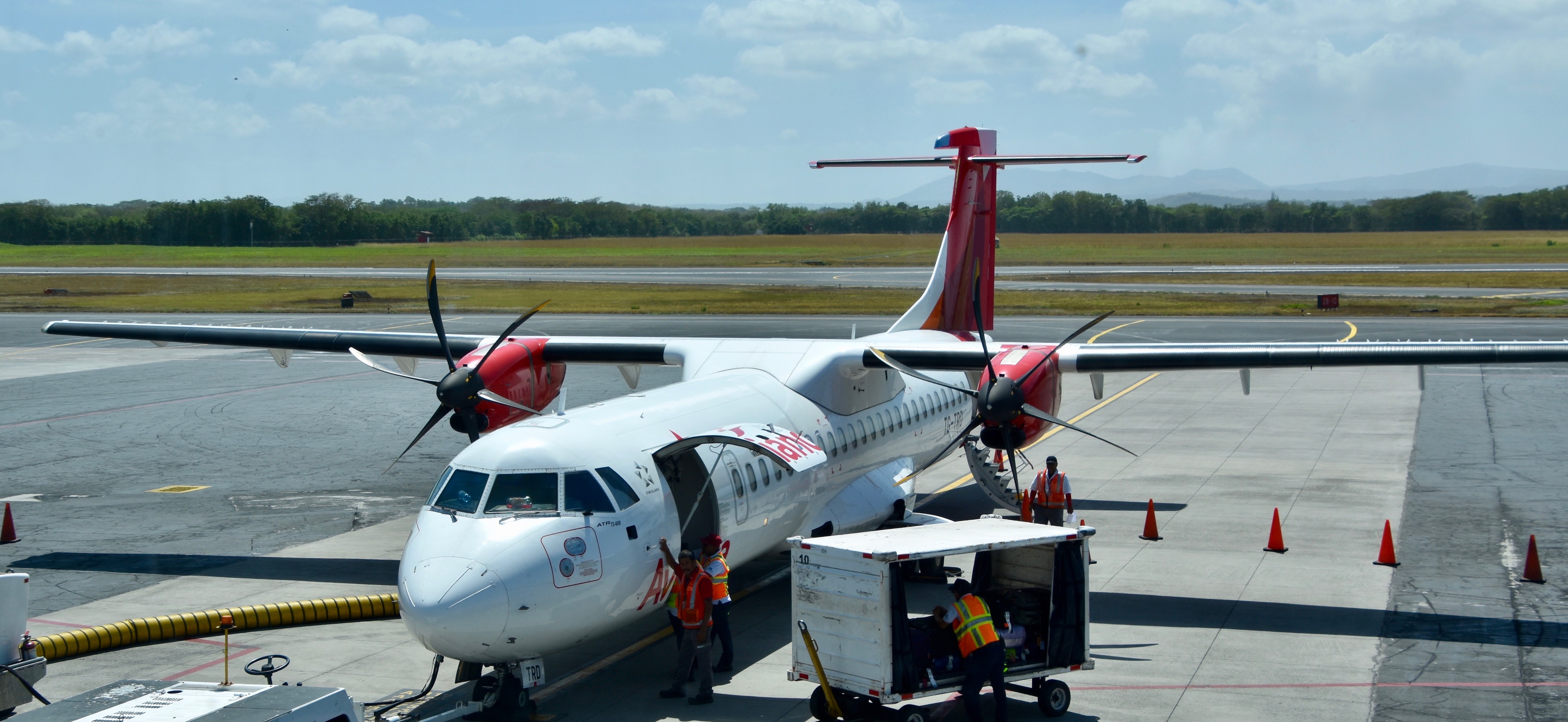
The flight departed on schedule and we got a great view Lake Managua and Momotombo volcano as we headed northwest towards San Salvador.
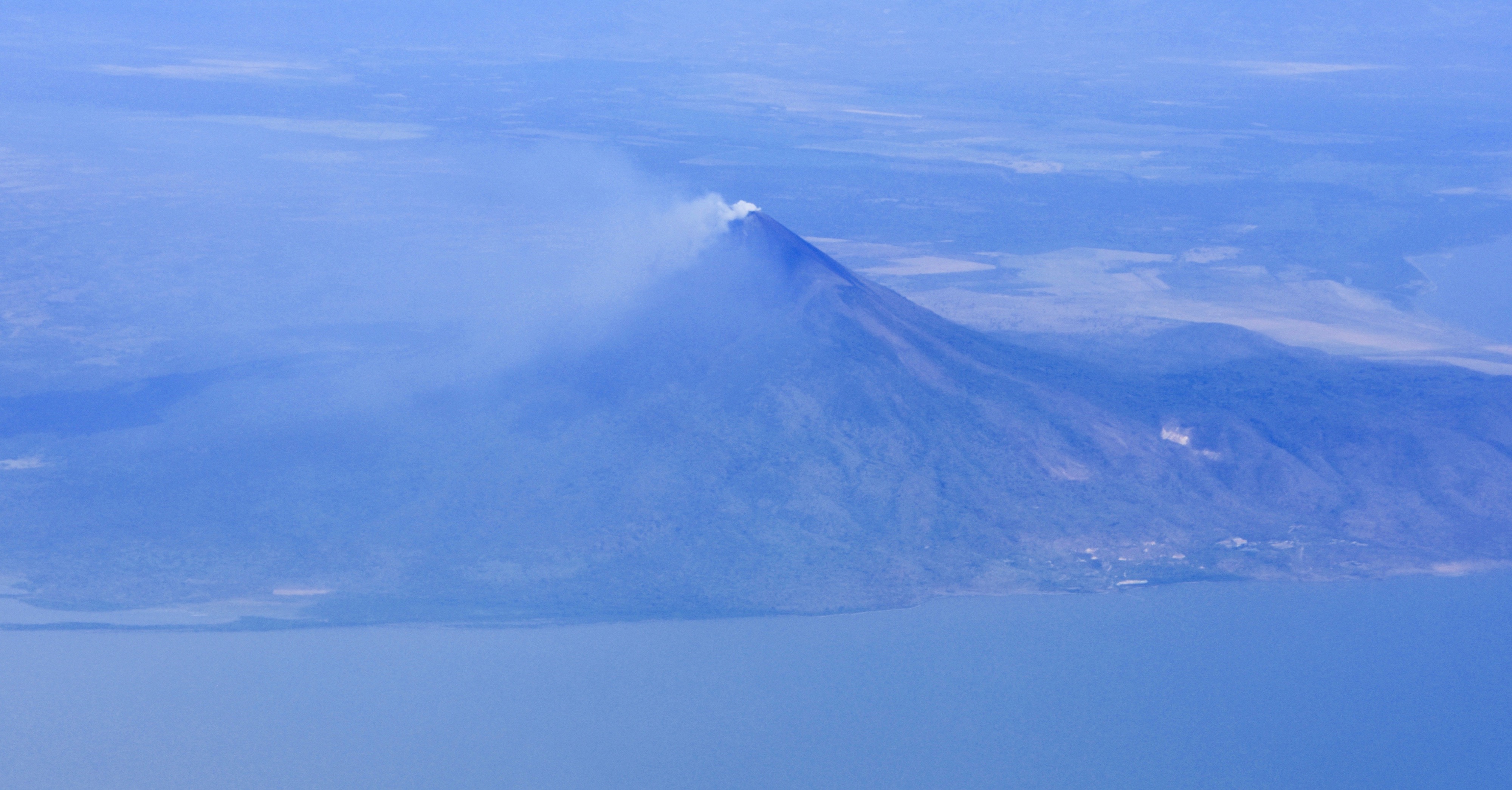
As we reached the Pacific Ocean I was surprised to see miles of deserted beaches on what would be the southeast coast of El Salvador. Somehow El Salvador and beaches didn’t seem to go together. This would be the first of many surprises over the next few days.
El Salvador International Airport is the second largest in Central America after only Panama City and according to my research has a safety and security level exceeded in North and Central America only by airports in Canada and United States. That becomes apparent almost from the moment we step off the plane and we have our first inkling of what the Covid-19 virus might mean for travellers. Up to this point Covid-19 had been restricted to China and Trump was calling it another one of the hoaxes he seems to uncover on an almost daily basis. It really didn’t seem a concern, yet every single airport employee was wearing a surgical mask. The lineups were not overly long by international airport standards, but they were moving very slowly. The reason was, as we found out when our turn at customs came, they were checking each passport to see if any had recent stamps from China. Luckily no one in our group had been there within the past six months so it was not a problem. Some were also asked to fill out a form indicating that they did not have the virus which seemed kind of self defeating, but fast forward six weeks and we are using similar forms in Canada.
We were greeted at the exit by our local guide, a young man of about thirty with the unusual, but prepossessing name of Dionysius. Who wouldn’t want to be named after a god? However, he said just to call him Dio, which we did. His English was quite good, but I immediately noticed that when he pronounced the name of his country it didn’t come out as El Salvador. It took me a few days for my ears to pick up that he was saying ‘El Saldor’, eliding the ‘va’ portion of the name as we pronounce it.
After making sure everyone had cleared customs Dio led us out to our bus which was a lot smaller than the one we had in Nicaragua. Over the next two days we would find out there was good reason for a narrower and shorter vehicle. The airport lies 50 kms. (30 miles) south of the city and there is a good four lane highway connecting the two. There was a lot more traffic than in Nicaragua and the cars were generally newer and more high end than Nicaraguan ones. Once again I observed that Latin American drivers are generally less speed crazy than their European counterparts and not in love with the sound of their horns. The one negative I did notice was the amount of trash on the roadsides. It was pretty bad in Nicaragua, but far worse here. For some reason I tend to associate littering with low self esteem, but in reality its a learned behaviour that’s passed from one generation to another until finally the light bulb goes and it stops. El Salvador isn’t remotely there yet.
San Salvador and its suburbs are home to over two million people or about one-third of the country’s population that’s contained in an area only the size of Massachusetts. The temptation would be to think, “Boy, that’s crowded”, but guess what? Massachusetts has half a million more residents than El Salvador and most people don’t consider it over populated. Just as Massachusetts has lots of places to get away from the cities like the Berkshires, so I expect to find in El Salvador.
San Salvador is in a valley surrounded by mountains, many of which are volcanoes and it’s actually quite nice looking from the bus, but one thing above all stands out. Almost every single business has at least one uniformed security guard all toting 12 gauge shotguns with pistol grips. Most seem to be middle aged and Dio explains that after the civil war ended in 1992 there were a lot of ex-fighters on both sides with nothing to do. There was also a lot of crime so most of these guys drifted into security and spend the rest of their working days just standing in front of one building. They are meant to be a type of security blanket and the presence of so many seems to make that work. If you are a criminal looking for a target you are not going to look for a place where you might not get shotgunned in the process of robbing the place. The reality is that the businesses that can afford guards are in the more affluent neighbourhoods which means they are safe and the poor districts are not. End of story.
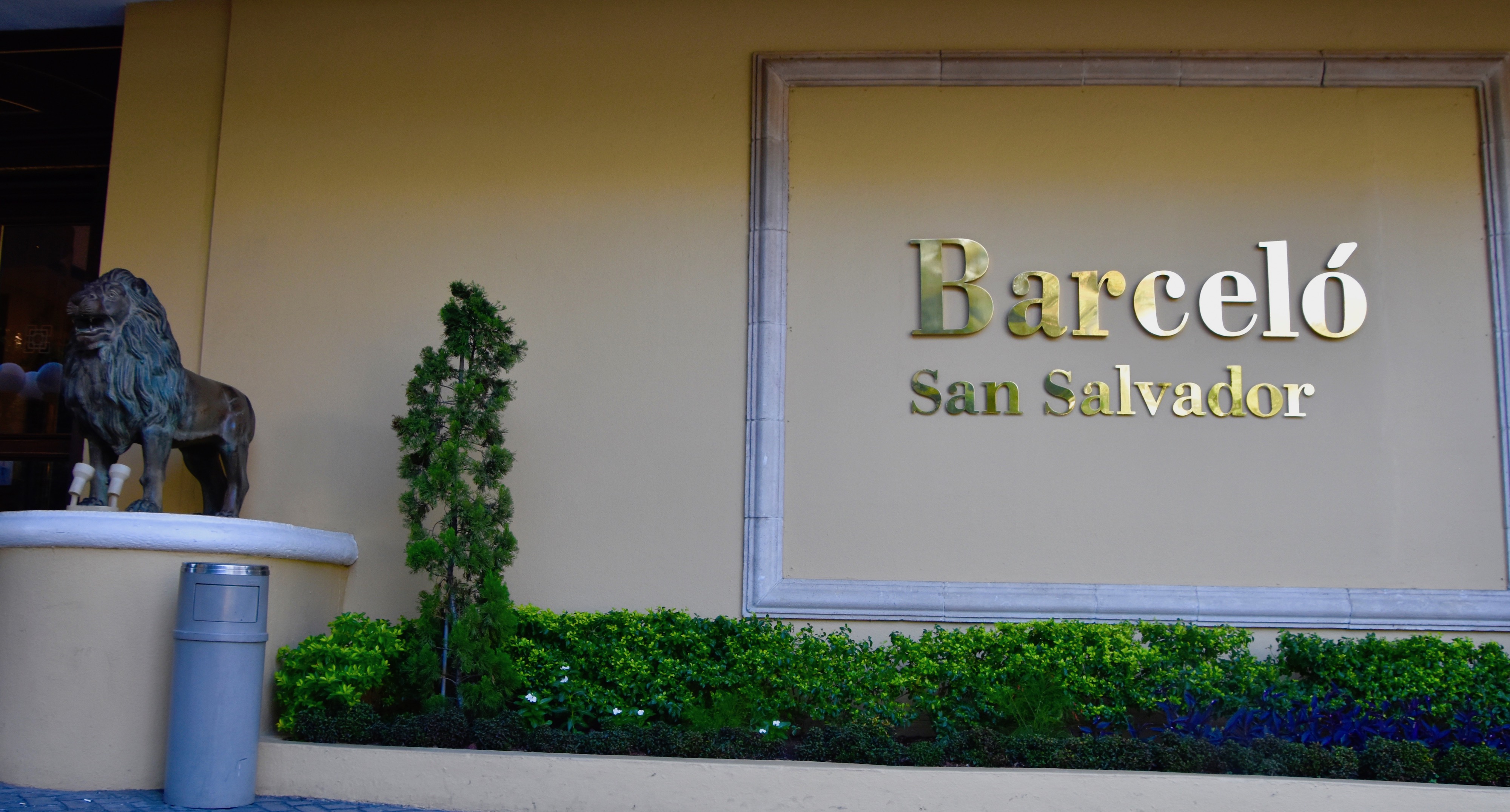
The street where our hotel is located is in the older suburb of Colonia San Benito and there are really a shitload of guards around so it must be extra safe. I am surprised by the number of quite large modern buildings including the Hotel Barcelo San Salvador which reminds me of a new version of the Fort Garry Hotel in Winnipeg. It’s a large, modern urban hotel run by the Spanish based Barcelo group and during our two days here I didn’t see a lot of other tourists, but I did see a lot of wedding parties. In fact it seemed to be wedding central El Salvador.
After checking in we had some free time so I went for a stroll which is a euphemism for picking up some wine and beer. San Benito is a very leafy suburb with some impressive buildings like this one almost across the street from the Barcelo.
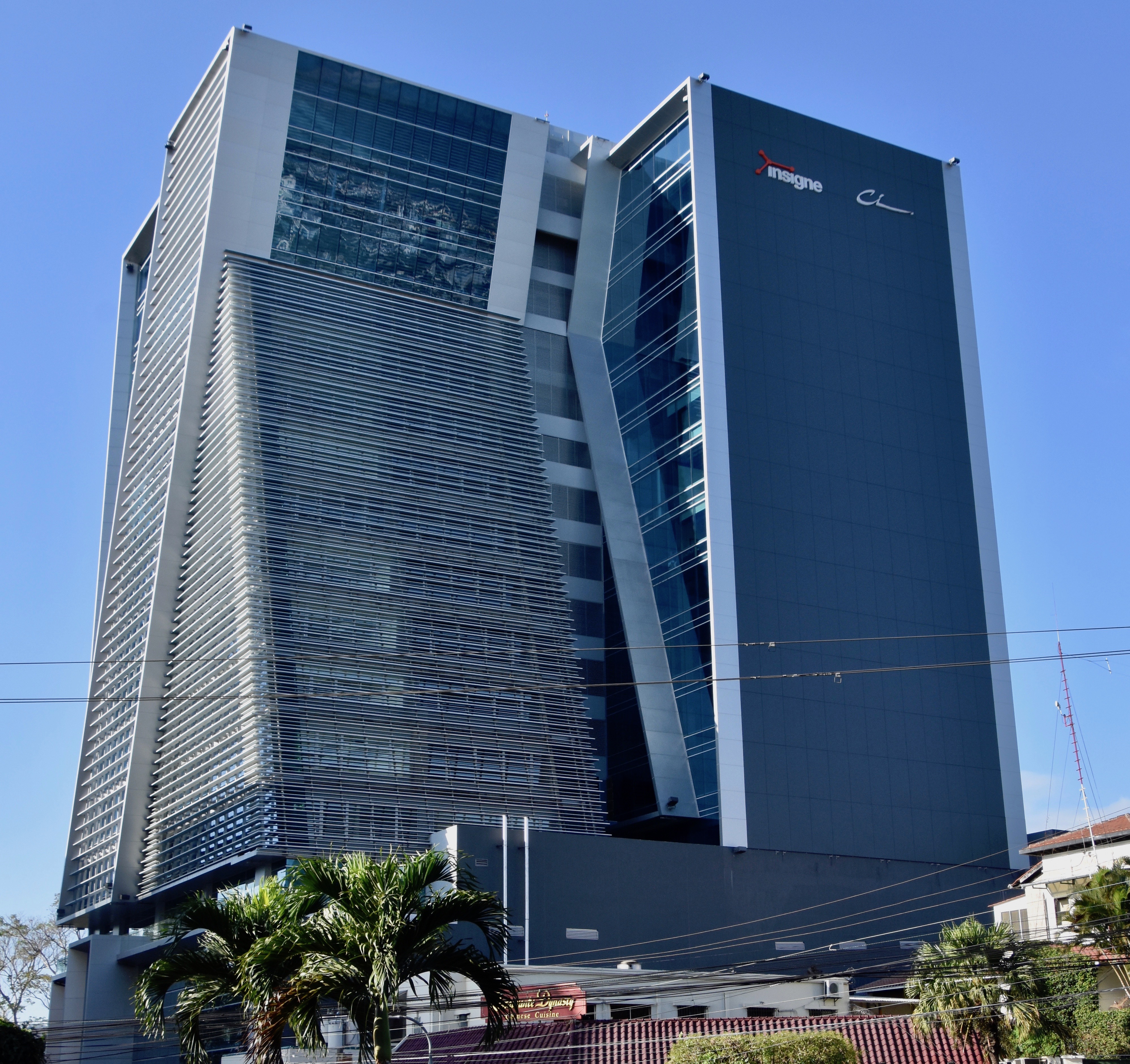
At first all the armed guards made me a bit tense, but after a few minutes it was like they were a natural part of this environment. They were not unfriendly and mostly just ignored me as I walked the three blocks or so to the nearest Super Selectos which is the largest grocery chain in El Salvador. I don’t know why, but whenever I go into a grocery store in a third world country for the first time I always expect it to be run down with half empty shelves, poorly dressed customers and a bad smell. I’m almost always wrong. This Super Selectos was bright, had a produce section that would be the envy of any in Canada, smartly dressed patrons and a great selection of wine and beer. Since the official El Salvador currency is the US greenback there’s not even the problem of not having a clue at how much anything costs.
Walking back to the hotel I keep a furtive eye out for anyone with gang tattoos, I mean they’re supposed to be running this country according to you know who. I don’t see anyone with a tattoo of any kind, let alone the facial tats that gang bangers favour. I’m slowly starting to realize that once again, my negative expectations about a place I’ve never been, are not going to be met and that I might even like El Salvador.
Any negative thoughts are further put to rest when we meet Victor and the group at the Cadejo Brewing Company which is a craft brewery and restaurant within walking distance of the hotel. The selection of beers is very large for a craft brewery and no matter what your taste in beer you’ll find something to your liking here. Oh, and the food’s great too.
Back at the hotel there is time for a nightcap at Churchill’s whose dark lighting and leather chairs remind me of a London men’s club, not that I’ve ever been allowed in one.
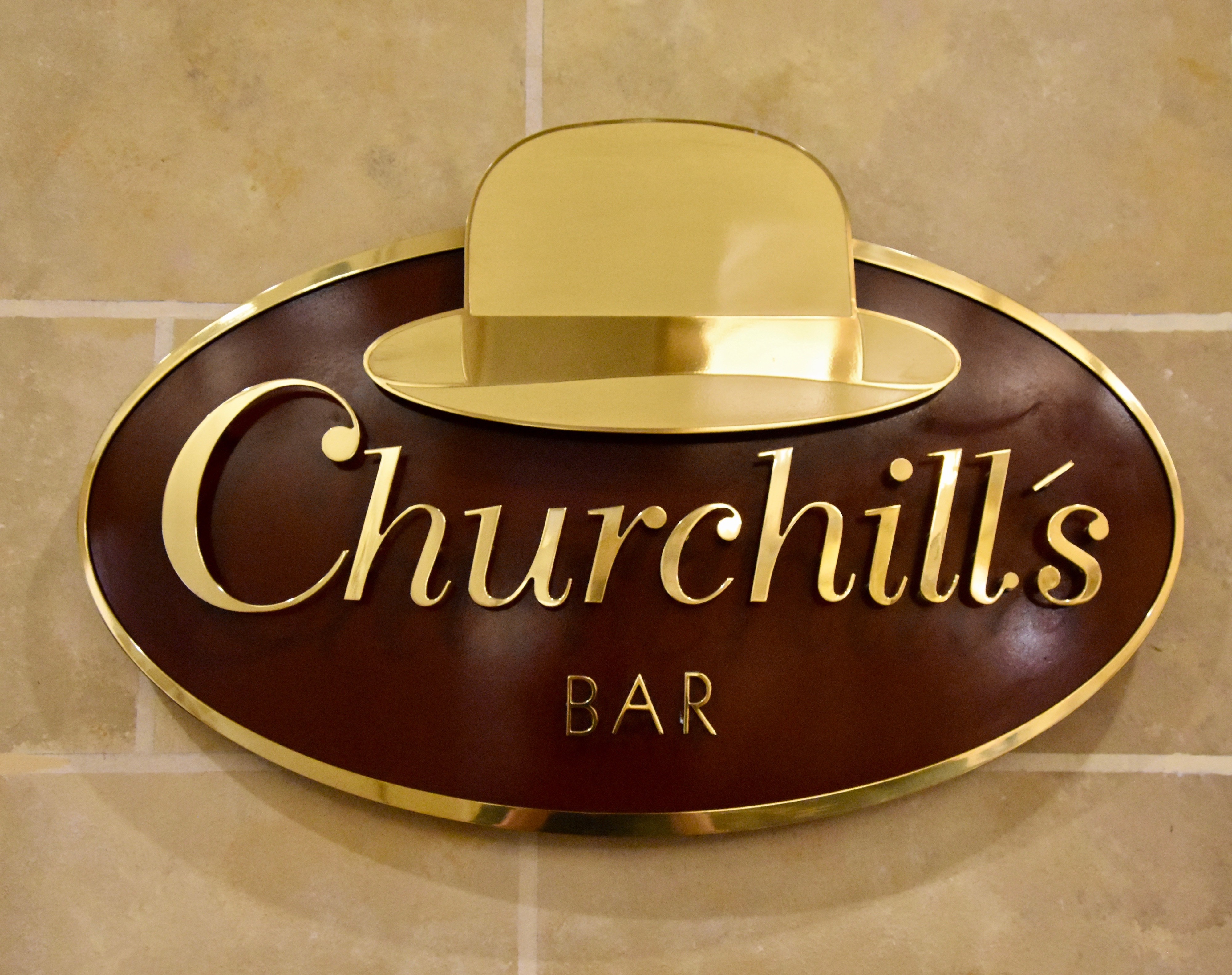
It’s been an interesting day going from the contrast of colonial Leon to the urbanity of San Salvador. Life is always interesting traveling with Victor. Tomorrow we’ll get out to see some of the countryside and out first Mayan site and then do some tie-dyeing at an indigo farm which I am told is a first for Adventures Abroad. Hope you’ll join us.

